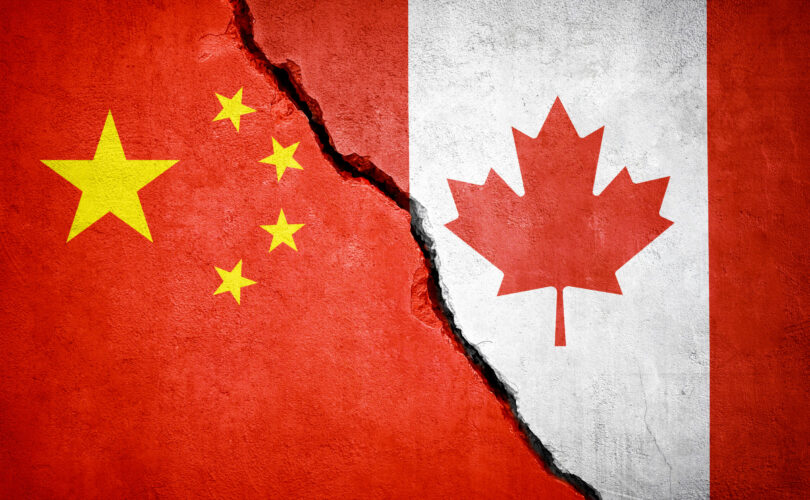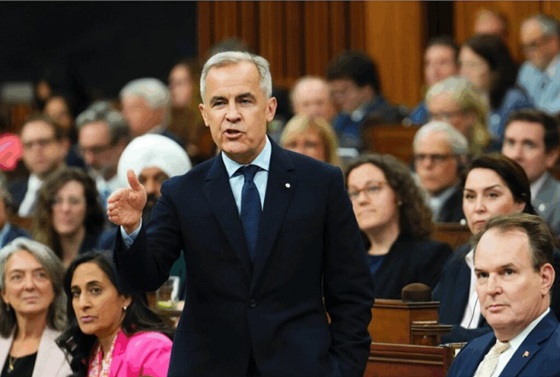Environment
Official Temperature Data Aren’t ‘Data’ and Shouldn’t Be Used to Restrict Freedom

From Heartland Daily News
It is becoming increasingly clear that the temperature data the U.S. government and many other governments use to predict catastrophic climate change, the data from surface temperature stations, aren’t accurate.
To paraphrase Elizabeth Barrett Browning’s Sonnet 43: How bad is the surface station record? Let me count the flaws.
Even its climate alarmist defenders acknowledge that surface station data runs too hot. To make matters worse for the alarmist cause, the overheated surface station data are still lower than what climate models say the temperatures should be based on the amount of carbon dioxide in the atmosphere. This fact strongly suggests the assumed climate sensitivity to a doubling of atmospheric carbon dioxide of pre-industrial levels built into models is also way too high.
Further evidence that the surface station data are flawed stems from the fact that the surface station readings do not match the temperatures recorded by global satellites and weather balloons, two alternative temperature sources whose data sets closely track each other.
The Heartland Institute has exposed instances in both the United States and abroad wherein official agencies tamper with past temperature data at pristine stations. Not only have these agencies been caught adjusting records to appear cooler than what was actually recorded, they have also manipulated temperatures upward, making the recent warming trend appear steeper and more severe than it actually is.
I’ve written extensively about the so-called adjustments made by corrupt NOAA scientists in 2015, just before the Paris climate treaty negotiations – mixing data from unbiased ocean buoys with heat-biased temperature measurements taken from ships’ engine water intake inlets, which made it appear as if the ocean was suddenly warming faster than before. More recent research claiming the oceans were heating up fast, seeming to confirm NOAA’s manipulated ocean claims, had to be corrected for overstating ocean warming or risk being withdrawn from publication.
My colleague, award-winning meteorologist Anthony Watts, working with a team of volunteers, independently documented serious problems with the official surface temperature record arising from the fact that the vast majority of temperature stations are poorly sited. In fact, these stations routinely fail to meet NOAA’s own standards for quality, which results in temperatures being skewed upward due to the Urban Heat Island (UHI) effect.
In 2009, and again in 2022, Watts detailed with station location data and photographic evidence just how woefully ill-sited these surface stations truly are. Stations providing official data were frequently sited in locations where surrounding surfaces, structures, and equipment radiated stored heat or emitted heat directly biased and drove the recorded temperatures higher than were recorded at stations in the same region that were uncompromised by the well-known UHI effect that is widely ignored by alarmists and official government agencies. Watts’ 2009 paper determined that 89 percent of the stations failed to meet the National Weather Service’s own siting requirements.
The media and government bureaucrats took notice of Watts’ findings, the latter producing official responses that admitted the problem, while declaring the temperature record, despite the gross violation of established rules for sound temperature data collection, was still valid and reliable.
Even while claiming “no harm, no foul,” the U.S. government shuttered some of the most egregiously sited stations highlighted in Watts’ report and established an alternative temperature network, the U.S. Climate Reference Network (USCRN), consisting of new stations with state-of-the-art equipment sited in locations unlikely to ever be impacted by the UHI effect. The temperature data set from the USCRN, for anyone who cares, displays about half the warming and a slower rate of warming than the broader U.S. Historical Climate Network (USHCN) used by the government in its official reports claiming unprecedented warming. In fact, the data from the relatively few well-sited, unbiased USHCN stations, when compared to the network as a whole, also show half the warming reported by the government. The government has accurate data, it just doesn’t report or count it as official.
Simultaneously, the government added thousands of previously uncounted temperature stations maintained by various agencies and private parties to the official network – existing stations added without any quality control protocols.
The result of the latter effort was predictably disastrous from the perspective of producing a high quality, trustworthy record of surface temperatures uninfluenced by the UHI effect. Unfortunately, Watts’ 2022 report found that the situation has become even worse. Watts and his team of volunteers discovered that 96 percent of the stations surveyed in the NOAA’s expanded network failed its own quality control standards for siting, resulting in an UHI bias in the temperatures they report.
Now, an investigative report by Katie Spence, a journalist at The Epoch Times, exposes an additional problem with the U.S. surface temperature record – a failing arguably more egregious than the issues I’ve discussed so far: many “stations” allegedly “reporting” temperatures don’t actually exist anymore, and haven’t for years. The government is just making up the data reported from many locations based on an averaging of temperatures recorded at other locations in the area.
And it’s not just a few missing stations providing made-up numbers, pointed out Lt. Col. John Shewchuk, a certified consulting meteorologist, who was interviewed by Spence for the story.
“NOAA fabricates temperature data for more than 30 percent of the 1,218 USHCN reporting stations that no longer exist,” Shewchuk told Spence. “They are physically gone – but still report data – like magic.”
To this day, NOAA still relies upon temperature “data” from the ghost stations, with an “E” for estimate.
Watts was consulted for the story as well, explaining to The Epoch Times that, “[i]f this kind of process were used in a court of law, then the evidence would be thrown out as being polluted.”
While the surface data may be the best source we have, when it is as biased or even fabricated as it is increasingly found to be, there is no way it should be used to drive public policies limiting the freedom of billions of people in their personal and economic affairs, all in the vain hope of controlling the weather in the future.
H. Sterling Burnett, Ph.D., ([email protected]) is the director of the Arthur B. Robinson Center on Climate and Environmental Policy at The Heartland Institute, a non-partisan, non-profit research organization based in Arlington Heights, Illinois.
Automotive
Politicians should be honest about environmental pros and cons of electric vehicles

From the Fraser Institute
By Annika Segelhorst and Elmira Aliakbari
According to Steven Guilbeault, former environment minister under Justin Trudeau and former member of Prime Minister Carney’s cabinet, “Switching to an electric vehicle is one of the most impactful things Canadians can do to help fight climate change.”
And the Carney government has only paused Trudeau’s electric vehicle (EV) sales mandate to conduct a “review” of the policy, despite industry pressure to scrap the policy altogether.
So clearly, according to policymakers in Ottawa, EVs are essentially “zero emission” and thus good for environment.
But is that true?
Clearly, EVs have some environmental advantages over traditional gasoline-powered vehicles. Unlike cars with engines that directly burn fossil fuels, EVs do not produce tailpipe emissions of pollutants such as nitrogen dioxide and carbon monoxide, and do not release greenhouse gases (GHGs) such as carbon dioxide. These benefits are real. But when you consider the entire lifecycle of an EV, the picture becomes much more complicated.
Unlike traditional gasoline-powered vehicles, battery-powered EVs and plug-in hybrids generate most of their GHG emissions before the vehicles roll off the assembly line. Compared with conventional gas-powered cars, EVs typically require more fossil fuel energy to manufacture, largely because to produce EVs batteries, producers require a variety of mined materials including cobalt, graphite, lithium, manganese and nickel, which all take lots of energy to extract and process. Once these raw materials are mined, processed and transported across often vast distances to manufacturing sites, they must be assembled into battery packs. Consequently, the manufacturing process of an EV—from the initial mining of materials to final assembly—produces twice the quantity of GHGs (on average) as the manufacturing process for a comparable gas-powered car.
Once an EV is on the road, its carbon footprint depends on how the electricity used to charge its battery is generated. According to a report from the Canada Energy Regulator (the federal agency responsible for overseeing oil, gas and electric utilities), in British Columbia, Manitoba, Quebec and Ontario, electricity is largely produced from low- or even zero-carbon sources such as hydro, so EVs in these provinces have a low level of “indirect” emissions.
However, in other provinces—particularly Alberta, Saskatchewan and Nova Scotia—electricity generation is more heavily reliant on fossil fuels such as coal and natural gas, so EVs produce much higher indirect emissions. And according to research from the University of Toronto, in coal-dependent U.S. states such as West Virginia, an EV can emit about 6 per cent more GHG emissions over its entire lifetime—from initial mining, manufacturing and charging to eventual disposal—than a gas-powered vehicle of the same size. This means that in regions with especially coal-dependent energy grids, EVs could impose more climate costs than benefits. Put simply, for an EV to help meaningfully reduce emissions while on the road, its electricity must come from low-carbon electricity sources—something that does not happen in certain areas of Canada and the United States.
Finally, even after an EV is off the road, it continues to produce emissions, mainly because of the battery. EV batteries contain components that are energy-intensive to extract but also notoriously challenging to recycle. While EV battery recycling technologies are still emerging, approximately 5 per cent of lithium-ion batteries, which are commonly used in EVs, are actually recycled worldwide. This means that most new EVs feature batteries with no recycled components—further weakening the environmental benefit of EVs.
So what’s the final analysis? The technology continues to evolve and therefore the calculations will continue to change. But right now, while electric vehicles clearly help reduce tailpipe emissions, they’re not necessarily “zero emission” vehicles. And after you consider the full lifecycle—manufacturing, charging, scrapping—a more accurate picture of their environmental impact comes into view.
Agriculture
Canada’s air quality among the best in the world

From the Fraser Institute
By Annika Segelhorst and Elmira Aliakbari
Canadians care about the environment and breathing clean air. In 2023, the share of Canadians concerned about the state of outdoor air quality was 7 in 10, according to survey results from Abacus Data. Yet Canada outperforms most comparable high-income countries on air quality, suggesting a gap between public perception and empirical reality. Overall, Canada ranks 8th for air quality among 31 high-income countries, according to our recent study published by the Fraser Institute.
A key determinant of air quality is the presence of tiny solid particles and liquid droplets floating in the air, known as particulates. The smallest of these particles, known as fine particulate matter, are especially hazardous, as they can penetrate deep into a person’s lungs, enter the blood stream and harm our health.
Exposure to fine particulate matter stems from both natural and human sources. Natural events such as wildfires, dust storms and volcanic eruptions can release particles into the air that can travel thousands of kilometres. Other sources of particulate pollution originate from human activities such as the combustion of fossil fuels in automobiles and during industrial processes.
The World Health Organization (WHO) and the Canadian Council of Ministers of the Environment (CCME) publish air quality guidelines related to health, which we used to measure and rank 31 high-income countries on air quality.
Using data from 2022 (the latest year of consistently available data), our study assessed air quality based on three measures related to particulate pollution: (1) average exposure, (2) share of the population at risk, and (3) estimated health impacts.
The first measure, average exposure, reflects the average level of outdoor particle pollution people are exposed to over a year. Among 31 high-income countries, Canadians had the 5th-lowest average exposure to particulate pollution.
Next, the study considered the proportion of each country’s population that experienced an annual average level of fine particle pollution greater than the WHO’s air quality guideline. Only 2 per cent of Canadians were exposed to fine particle pollution levels exceeding the WHO guideline for annual exposure, ranking 9th of 31 countries. In other words, 98 per cent of Canadians were not exposed to fine particulate pollution levels exceeding health guidelines.
Finally, the study reviewed estimates of illness and mortality associated with fine particle pollution in each country. Canada had the fifth-lowest estimated death and illness burden due to fine particle pollution.
Taken together, the results show that Canada stands out as a global leader on clean air, ranking 8th overall for air quality among high-income countries.
Canada’s record underscores both the progress made in achieving cleaner air and the quality of life our clean air supports.
-

 International2 days ago
International2 days agoOttawa is still dodging the China interference threat
-

 Business2 days ago
Business2 days agoTaxing food is like slapping a surcharge on hunger. It needs to end
-

 espionage2 days ago
espionage2 days agoCarney Floor Crossing Raises Counterintelligence Questions aimed at China, Former Senior Mountie Argues
-

 Energy2 days ago
Energy2 days ago75 per cent of Canadians support the construction of new pipelines to the East Coast and British Columbia
-

 Health1 day ago
Health1 day agoFDA warns ‘breast binder’ manufacturers to stop marketing to gender-confused girls
-

 Business20 hours ago
Business20 hours agoThere’s No Bias at CBC News, You Say? Well, OK…
-

 COVID-192 days ago
COVID-192 days agoJudge denies Canadian gov’t request to take away Freedom Convoy leader’s truck
-

 Agriculture1 day ago
Agriculture1 day agoSupply Management Is Making Your Christmas Dinner More Expensive












